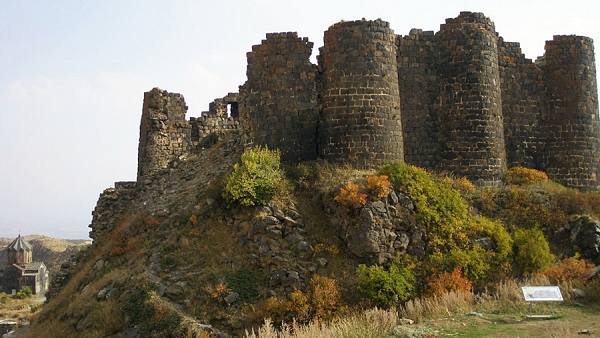
City tour in Yerevan, tour to Echmiadzin and Khor Virap. Trip to Amberd fortress and the Christian monastery in Geghard.
Excursion to Erebuni fortress, founded by Argishti I King of Urartu in 782 BC, and Erebuni museum which is housed in the ancient citadel of Erebuni, the predecessor of the present-day Yerevan. Its display includes bronze and iron tools, earthenware, weapons, ornaments and other articles made by Urartu craftsmen. All these have been discovered during excavations of the ancient town-fortress.
Visiting Matenadaran – depository of ancient manuscripts, guarded by the statue of primordial alphabet - giver St. Mashtots. There are conservation rooms for the 17000 manuscripts in dozen languages.
Visiting the Memorial in Tsitsernakaberd dedicated to the victims of the Genocide in 1915.
Visiting the State History Museum in Republic Square. The important archeological collection from Stone Age through Medieval periods are shown there. One should note a Latin inscription from Ejmiatsin attesting to the presence of a Roman garrison. There are some interesting models of early modern Yerevan and other historical exhibits.
Visiting the Hellenistic fortress of Garni, which has a different charm in each new season. The Greco-Roman-style temple was build around 77 AD under King Trdat I. This is the only architectural monument saved up to our days from Hellenistic period. The Temple is dedicated to the God of Sun Mher. It collapsed from the earthquake in 1679 and was reconstructed in 1970-s.
Route towards Geghardavank, a supremely beautiful architectural monument built in the 13th century. “Geghard” means a “spear-headed metal object” in Armenian, housed in Geghard, with which Christ was wounded in the side. Now it is saved in the Ejmiatsin treasury.
Trip to famous Lake Sevan (1900m above see level), that enters recorded history with the Urartians. King Rusa I conquered Sevan basin and made it the eastern frontier of the kingdom of Urartu sometime around the 720 BC. A number of boundary markers of Artashes I written in Aramaic, the Middle Eastern lingua franca, show the presence of the Artashesid dynasty in Hellenistic times. In the medieval times, Gegharkunik was dominated by the Dopian clan.
Visiting Haghartsin (11th c.), one of the most beautiful monuments of medieval architecture. There is an ancient nut tree nearby (said to be 1000 years old), shading a fine viewpoint of various remains of graves with typical Armenian ornaments, including “royal” graves of the Bagratuni family. There is a belief that one can have his dreams come true by passing through a huge hole right in the famous tree.
Back to Yerevan.
Route towards Ashtarak town. “Ashtarak” means “Tower” in Armenian. It is endowed with many historical, architectural and religious monuments.
Visiting Amberd fortress which is occupying a rugged promontory between the Amberd River and its main tributary. The fortress reached its zenith as the seat of the Pahlavuni feudal family in the 11th c.
Visiting burial site of Mesrop Mashtots at Oshakan. South from Ashtarak is Oshakan, which is most famous as the resting place of the creator of the Armenian alphabet Mesrop Mashtots. The first phrase ever written in Armenian using Mashtots alphabet was the one translated from the Old Testament. Visiting burial site of Mesrop Mashtots at Oshakan.
Back to Yerevan.
Visiting Vanadzor on the way – the administrative centre of Lori region.
Visiting Haghpat and Sanahin architectural monuments (10th-13th centuries), truly considered to be the jewels of medieval Armenian architecture preserved by UNESCO and included in the World Heritage list. Both were founded by Queen Khosrovanush around 976. Haghpat and Sanahin were major literary centres in the Middle Ages.
Back to Yerevan.
Tour to the Armenian-Turkish border and observing the ruins of ancient capital of the Armenian Kingdom Ani, now ghost city "of a thousand and one churches" from the State Border. At the present time Ani is located at the Turkish side. The ancient citadel of Ani is situated on the barren plains above the Arpacay Valley which separates Turkey and Armenia. The site is surrounded by an imposing fortified city wall, currently undergoing intensive restoration. This one time prominent city used to house over 100000 citizens in it’s hey-day. Once an important station on the ancient Silk Road, serving as a trading post and caravan-saray for merchants traveling with heavily laden camels between east and west, it is now a ruined ghost town. What remains now are several Armenian built churches, a ruined Seljuk palace, a couple of mosques and caravan-sarays and a cathedral. The colorful frescoes and paintings in the churches are still in fine condition although time has left its mark as well. Our company has an exclusive right to organize such a tour to the Armenian-Turkish border guarded by Armenian and Russian soldiers and to observe Ani from Akhurian river-bank.
Visiting the centre of Shirak region – Gyumri, which is considered to be a town of Armenian traditions and handicraftsmen.
Back to Yerevan.
Route towards Khor Virap. Seeing the historical site of Khor Virap with an overwhelming view of Biblical Mount Ararat. There are two deep stone cisterns there, one of which is said to be the pit where Gregory the Illuminator was imprisoned for 13 years by king Trdat III. Visiting to Karahunj ancient observatory. It is considered to be more than 7500 years old, more ancient than its British analogy Stonehenge.
On the back way visiting famous Complex of Noravank, situated on a ledge of a deep winding gorge of a tributary of the Arpa river near the village of Amaghu, Yeghegnadzor District. Noravank ensemble stands amidst the bizarre-shaped precipitous red cliffs. Built in place of an ancient cloister, it grew in the reign of Princes Orbelian of Syunik. In the 13th-14th centuries it became a residence of Syunik's bishops and, consequently, a major religious and later cultural center of Armenia, closely connected with many of the local seats of learning, primarily with Gladzor’s famed university and library.
Back to Yerevan.
Visiting Sardarapat Memorial and the Museum of Ethnography, Pilgrimage to Holy Ejmiatsin.
The Memorial Complex of the Sardarapat Battle Heroes was opened in 1968 and is situated 10 km away from Armavir town. This is the site where Armenians won a victory over Turkish aggressors in 1918. The complex includes a big park, a high bell tower and an alley with figures of eagles that leads up to the wall with a triumphal arch. Behind the wall there is the building of the Museum of Ethnography. The exposition of the museum is quite rich. It presents a multitude of materials from many historical and ethnographic regions of Armenia.
Pilgrimage to the first official Christian Church in the world and the seat of the Supreme Patriarch – Catholicos of all Armenians. Excursions to the ancient temple of St. Hripsime. Tour around Ejmiatsin town, visiting the Cathedral – religious centre of all Armenians, and the Cathedral Museum. On the back way observing the ruins of Zvartnots (7th c.). The temple collapsed from the earthquake in the 10th c. Returning to Yerevan.
Driving to the lake Parz Lich. Sightseeing. Hiking along Aregun mountain range to Goshavank monastery. Seeing the monastery. Lunch. Driving to Sevan Peninsula. Visiting Sevanavank monastery. Driving to the church Hayravank. Visiting the church. Driving to the cemetery Noraduz. Visiting the old cemetery. Driving to Selim Karavan-Saray. Sightseeing. Driving to the village Yeghegis, to the mineral spring. Camping. Dinner-picnic. Overnight.
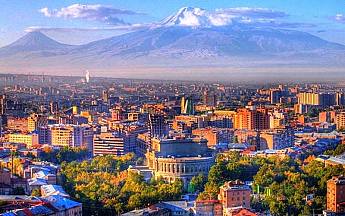
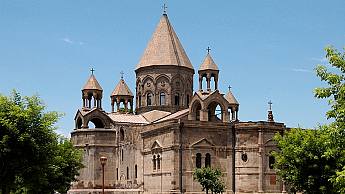
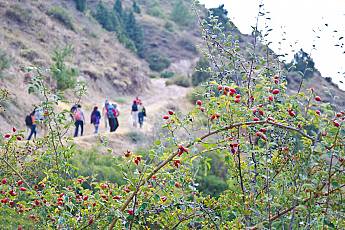
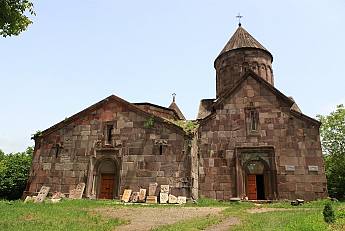
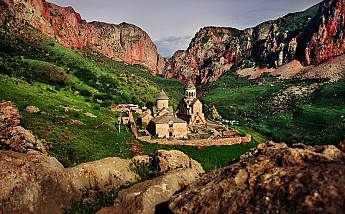

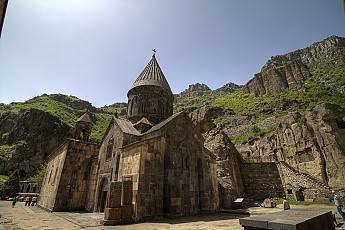
Leave a feedback:
Thank You for Your feedback:
Error feedback: